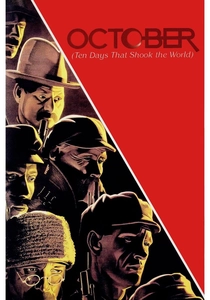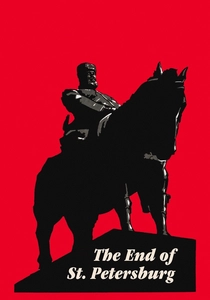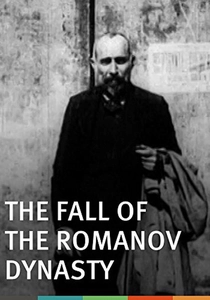This curated selection of Soviet films delves into the lives, struggles, and triumphs of the Bolsheviks, the revolutionary vanguard that transformed Russia and the world. These films provide not only historical insights but also a glimpse into the ideological fervor and the human stories behind the revolution. Each film in this collection has been chosen for its significance in depicting the Bolshevik era, offering viewers a chance to understand the complexities of this period through the lens of Soviet cinema.

October: Ten Days That Shook the World (1928)
Description: Directed by Sergei Eisenstein, this silent film dramatizes the events of the October Revolution of 1917, focusing on the storming of the Winter Palace. It's a seminal work in Soviet cinema, showcasing the revolutionary spirit and the pivotal role of the Bolsheviks.
Fact: The film was made to celebrate the 10th anniversary of the October Revolution. It was one of the first films to use montage theory extensively.
 Watch Now
Watch Now

The End of St. Petersburg (1927)
Description: This film depicts the life of a peasant who becomes involved in the revolutionary movement, offering a personal perspective on the Bolshevik revolution.
Fact: It was one of the first Soviet films to use non-professional actors to enhance realism.
 30 Days Free
30 Days Free

The Fall of the Romanov Dynasty (1927)
Description: Although not exclusively about Bolsheviks, this documentary film captures the end of the Romanov era, setting the stage for the Bolshevik rise to power. It's a historical document of the time.
Fact: The film uses archival footage from the Tsarist era, providing an authentic look at the period before the revolution.
 30 Days Free
30 Days Free

Lenin in October (1937)
Description: This film portrays the events leading up to the October Revolution, with a particular focus on Lenin's role. It's a key piece in understanding the Bolshevik leadership and their strategic planning.
Fact: The film was directed by Mikhail Romm, who later became a prominent figure in Soviet cinema. It was part of a series of films celebrating Lenin's legacy.
 30 Days Free
30 Days Free

The Vyborg Side (1939)
Description: Set in the aftermath of the October Revolution, this film explores the lives of workers in the Vyborg District of Leningrad, highlighting the continued struggle for the Bolshevik cause.
Fact: The film was shot in the actual locations where the events took place, adding to its authenticity.
 30 Days Free
30 Days Free

The Return of Maxim (1937)
Description: Part of a trilogy, this film follows the life of Maxim, a Bolshevik worker, and his involvement in the revolution, providing a narrative of the Bolshevik struggle from a grassroots level.
Fact: The trilogy was very popular and helped to shape the image of the proletariat hero in Soviet cinema.
 30 Days Free
30 Days Free

The Youth of Maxim (1935)
Description: This prequel to "The Return of Maxim" shows the early life of Maxim, detailing his path to becoming a Bolshevik, offering insights into the motivations of revolutionaries.
Fact: It was the first film in the Maxim trilogy, setting the stage for the character's development.
 30 Days Free
30 Days Free

Lenin in 1918 (1939)
Description: This film focuses on Lenin's leadership during the critical year of 1918, showcasing the challenges faced by the Bolsheviks in consolidating power.
Fact: The film was part of a broader effort to mythologize Lenin and the early Soviet state.
 30 Days Free
30 Days Free

The Iron Flood (1967)
Description: Based on the novel by Alexander Serafimovich, this film depicts the Red Army's struggle against the White forces during the Russian Civil War, with a strong emphasis on the Bolshevik spirit.
Fact: The film was one of the last major Soviet productions to deal with the Civil War era.
 30 Days Free
30 Days Free

Chapaev (1934)
Description: This film tells the story of Vasily Chapaev, a legendary Red Army commander, and his role in the Civil War, reflecting the heroism and sacrifices of Bolshevik fighters.
Fact: Chapaev became a cultural icon in the Soviet Union, with the film being one of the most popular of its time.
 30 Days Free
30 Days Free









